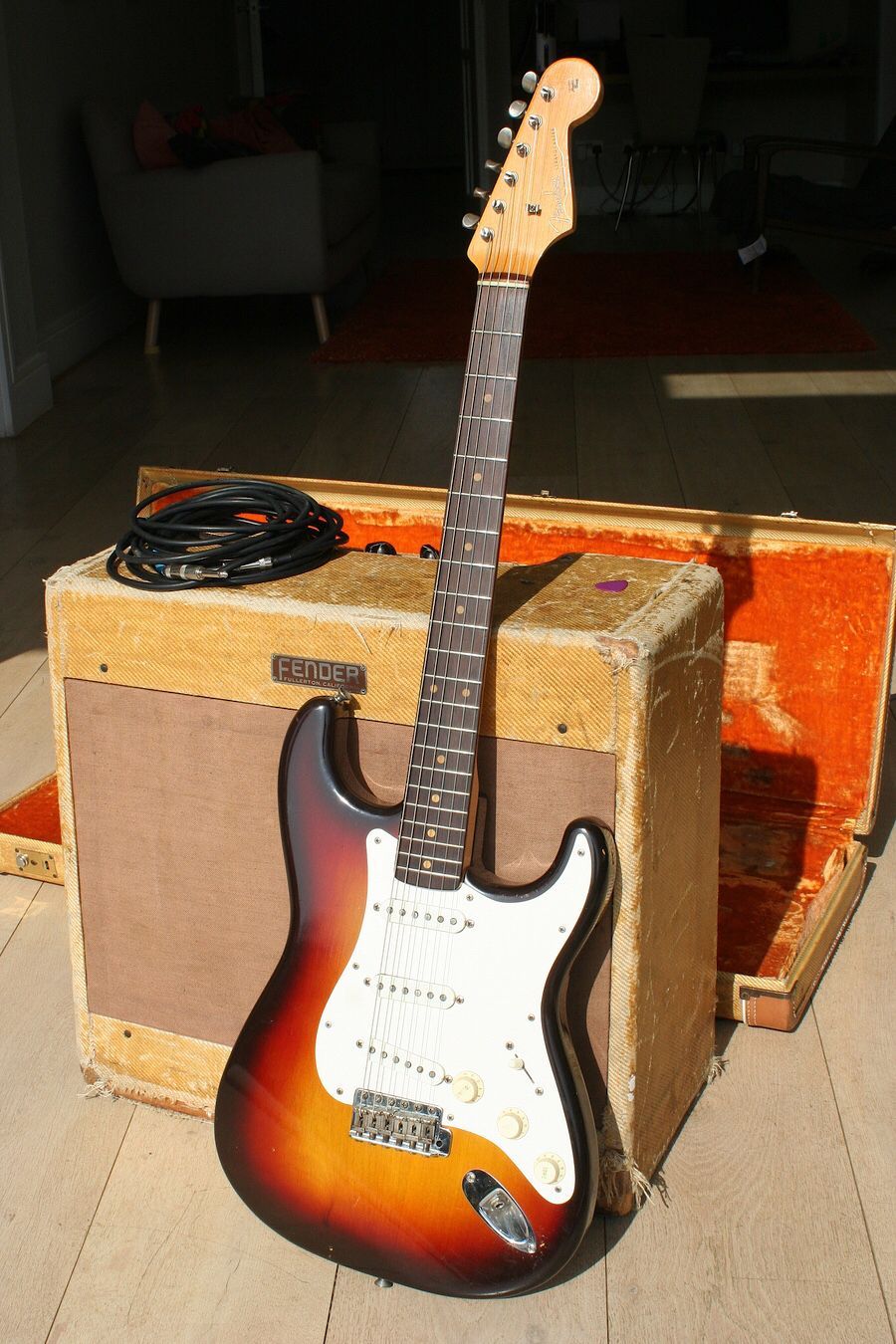Purpose
|
The design of organisations and products
|
Marvelling, as the JC often does, at the wondrous Fender Stratocaster got us thinking about how the design imperatives in a process may differ at different points in that process.
An electric guitar’s overall life-cycle includes its design, manufacture, marketing, use, maintenance and further use, in perpetuity, to kill fascists. The design imperatives for these different phases are very different: during manufacture, what’s important is cost of components, speed and ease of assembly. During sale, it is distribution channels, marketing, branding, and transport. Once purchased, a single careful owner cares not how easy the tremolo is to set up or the pickguard harness is to wire: she cares about only how easy it is to make, as Frank Zappa put it, “the disgusting stink of a too-loud electric guitar”.
These design imperatives conflict. How easy it is to make or sell bears no necessary relation to how easy a guitar is to play or fix. The interests and aspirations of those who interact with the guitar during its production and use — er, stakeholders — are very different. This was Leo Fender’s genius: to manage all these interests so the same thing delivers for all its users: It’s easy to machine, easy to build, easy to set up, easy to fix, easy to upgrade, easy to play, it looks great, gets the girls and kills fascists. It is probably even quite cool way to be killed, if you happen to be a fascist.
Hypothesis, therefore: great design works for all phases of the life-cycle, and all users, of an artefact throughout its production and use. There no strict hierarchy of priorities between these users: you might say “it is more important to be easy to play than to build” — but if build hassle doubles its production cost — or makes fixing it harder — there will be fewer users. The competing uses exist in some kind of ecosystem in which the artefact will thrive or perish.
Ok; that is a long and fiddly metaphor. Let us now — sigh — tear ourselves away from Fender’s wonderful creation, and apply it to the process of preparing, executing and performing commercial contracts.
Who are the interested constituencies when it comes to the production and use of contracts? It is not just Party A and Party B: it isn’t even Party A and Party B, if we take the JC’s cynical line that those corporate forms are merely a husk: a host — a static entry in a commercial register somewhere — unless and until animated by their agents.
The constituents — stakeholders who have an interest in “the contract” as it makes its Rake’s progress from hopeful aspiration to static data are in Sales, Legal, Credit, Docs, Operations, Risk, and Trading and their external advisors. Do not underestimate the interests of those advisers.
These diverse interests — what each group wants from its intervention in the contracting process — are wildly different as, therefore, are the design principles that apply to the contract in their hands.
You may hear wishful chat from LinkedIn thought-leaders about “legal design”: if they are serious, this is what they mean. How to bring Leo Fender’s spirit to the task of constructing a legal contract.
It is a spirit more talked about than seen, of course. Standardised contracts in the financial services world look more like the Teisco SS4L Orbiter than a Strat.
|
Premium content
Here the free bit runs out. Subscribers click 👉 here. New readers sign up 👉 here and, for ½ a weekly 🍺 go full ninja about all these juicy topics👇
|

